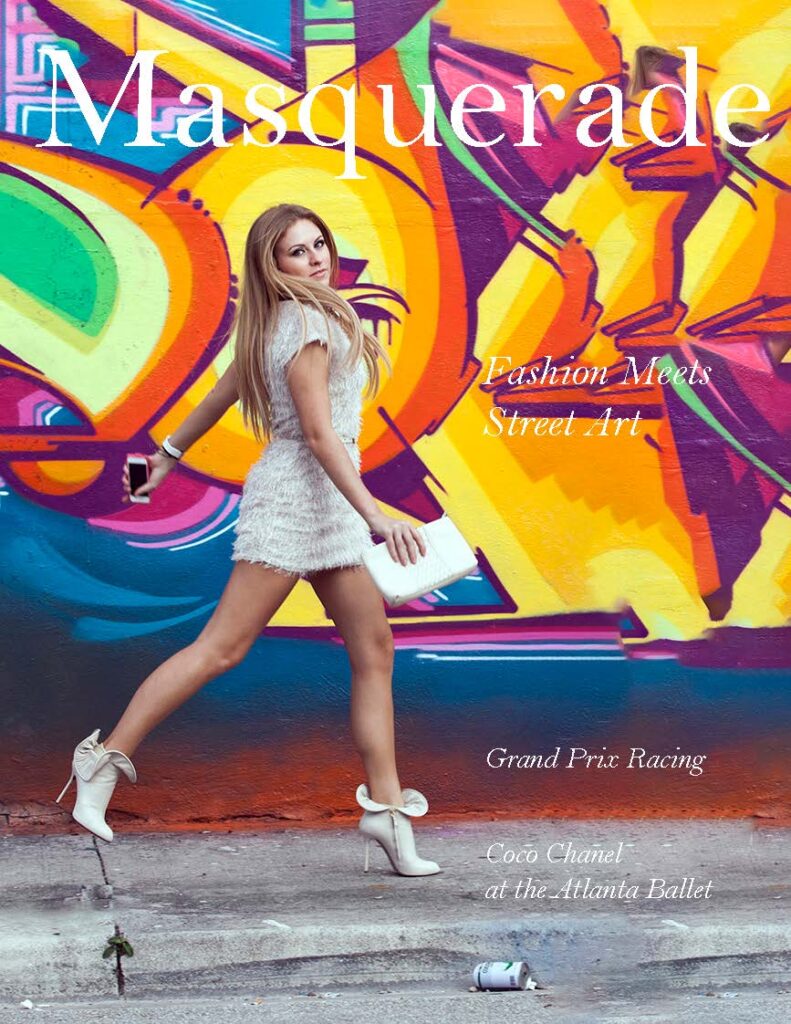
Story and Photography by Terry Check
Supermodel Iryna Storozhuk
From the bustling streets of New York City to the vibrant alleys of Paris, graffiti art has long been an integral part of urban culture. With its bold colors, intricate designs, and expressive messages, graffiti has captivated the imagination of both artists and onlookers alike. However, in recent years, this underground art form has transcended its street origins to become a prominent influence in the world of fashion design.
The Evolution of Graffiti Art
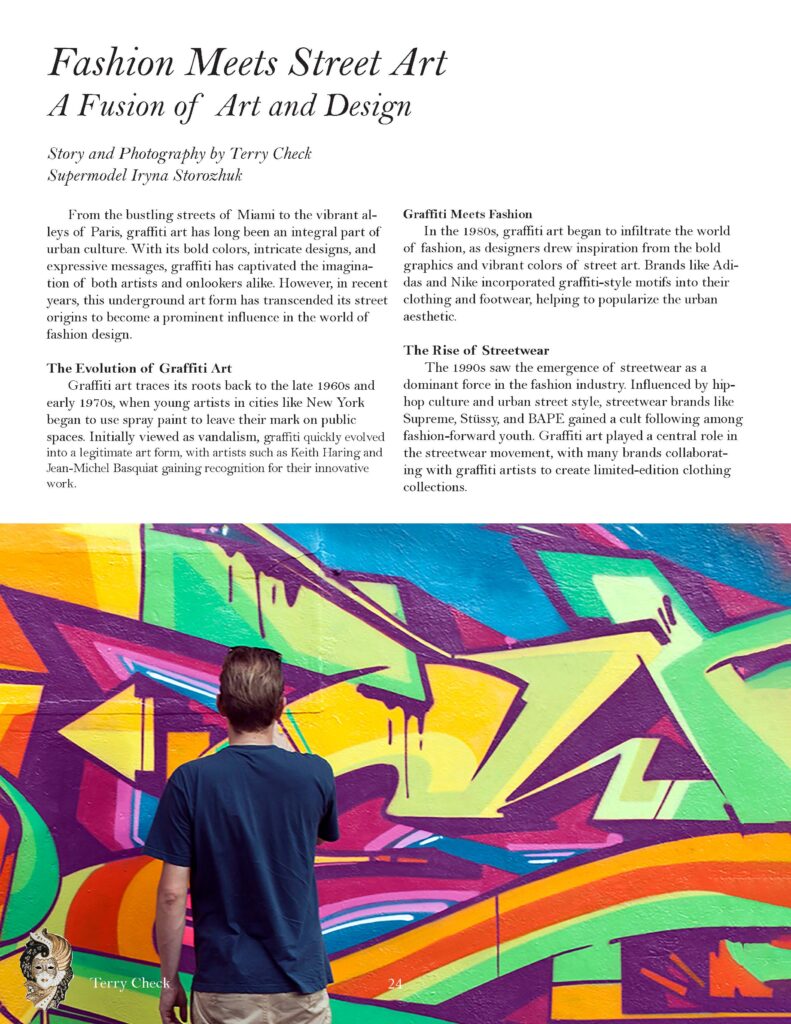
Graffiti art traces its roots back to the late 1960s and early 1970s, when young artists in cities like New York began to use spray paint to leave their mark on public spaces. Initially viewed as vandalism, graffiti quickly evolved into a legitimate art form, with artists such as Keith Haring and Jean-Michel Basquiat gaining recognition for their innovative work.
Graffiti Meets Fashion
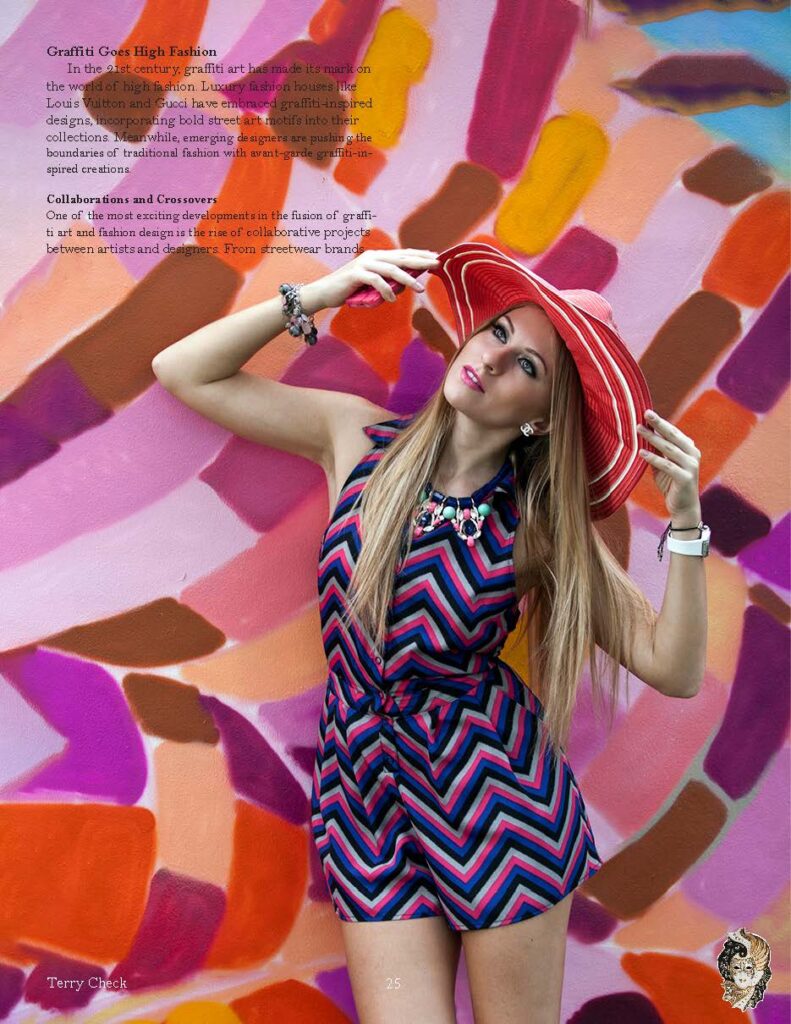
In the 1980s, graffiti art began to infiltrate the world of fashion, as designers drew inspiration from the bold graphics and vibrant colors of street art. Brands like Adidas and Nike incorporated graffiti-style motifs into their clothing and footwear, helping to popularize the urban aesthetic.
The Rise of Streetwear
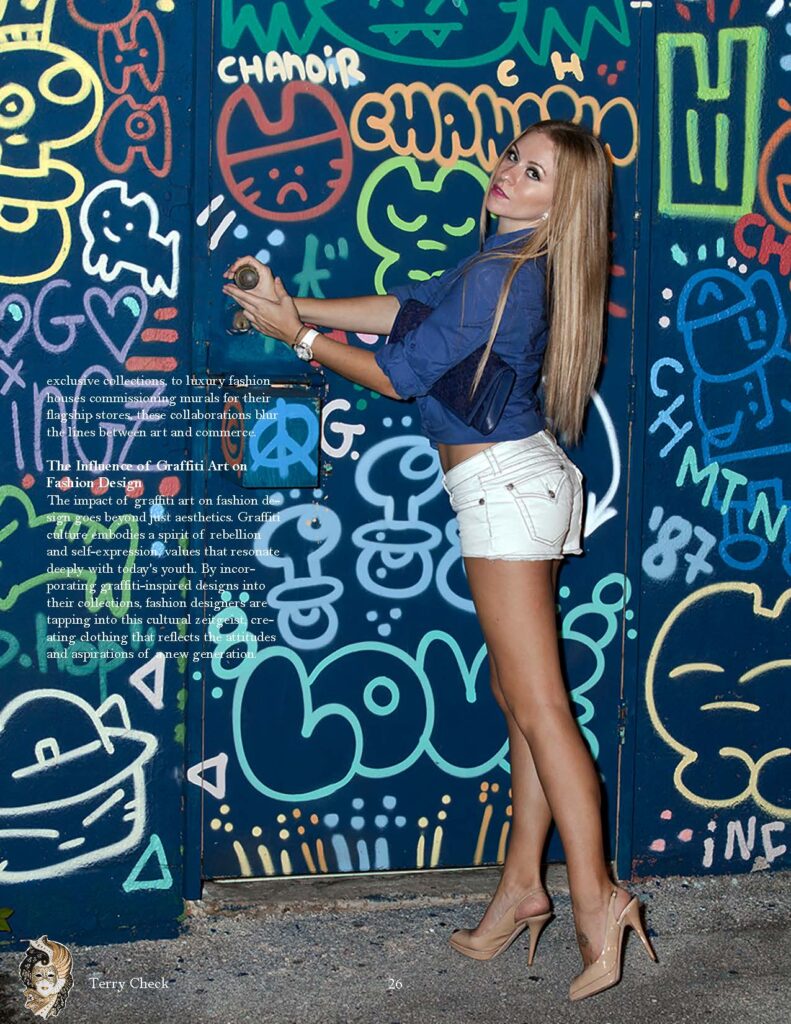
The 1990s saw the emergence of streetwear as a dominant force in the fashion industry. Influenced by hip-hop culture and urban street style, streetwear brands like Supreme, Stüssy, and BAPE gained a cult following among fashion-forward youth. Graffiti art played a central role in the streetwear movement, with many brands collaborating with graffiti artists to create limited-edition clothing collections.
Graffiti Goes High Fashion
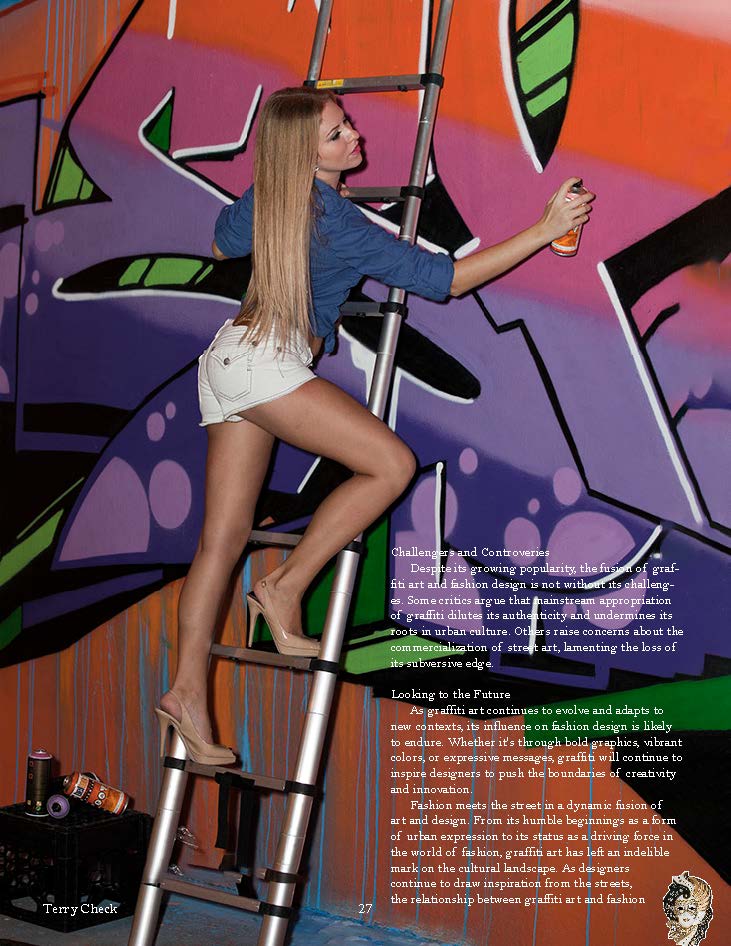
In the 21st century, graffiti art has made its mark on the world of high fashion. Luxury fashion houses like Louis Vuitton and Gucci have embraced graffiti-inspired designs, incorporating bold street art motifs into their collections. Meanwhile, emerging designers are pushing the boundaries of traditional fashion with avant-garde graffiti-inspired creations.
Collaborations and Crossovers
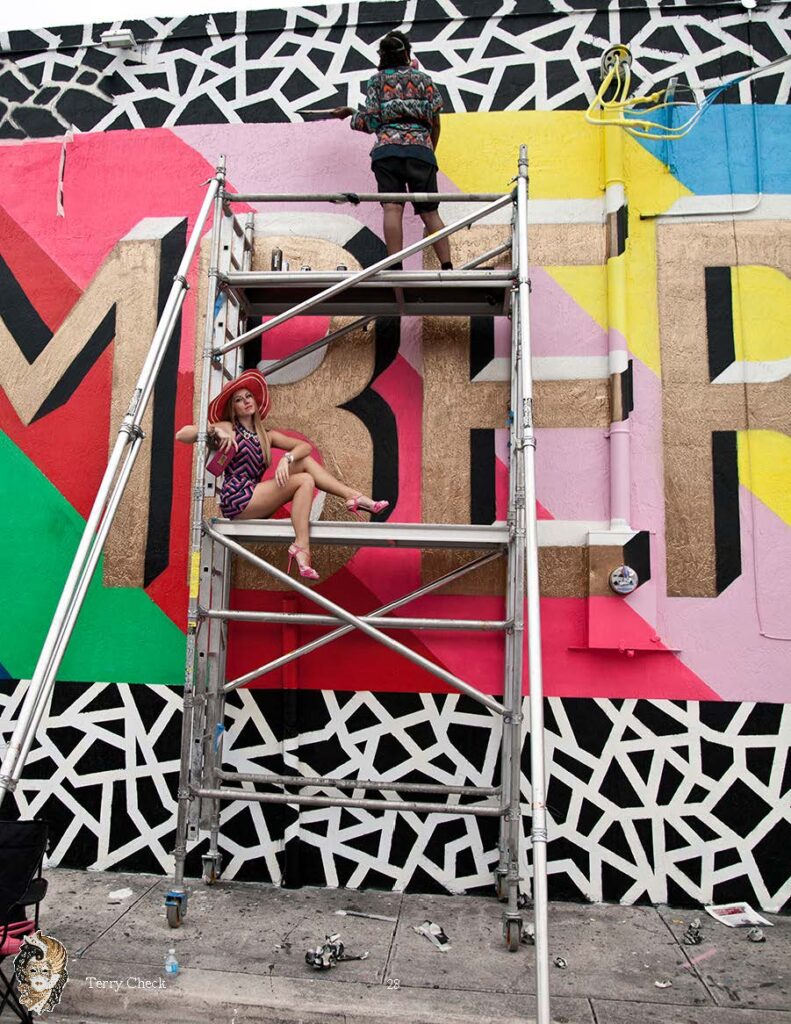
One of the most exciting developments in the fusion of graffiti art and fashion design is the rise of collaborative projects between artists and designers. From streetwear brands partnering with graffiti artists to create exclusive collections, to luxury fashion houses commissioning murals for their flagship stores, these collaborations blur the lines between art and commerce.
The Influence of Graffiti Art on Fashion Design
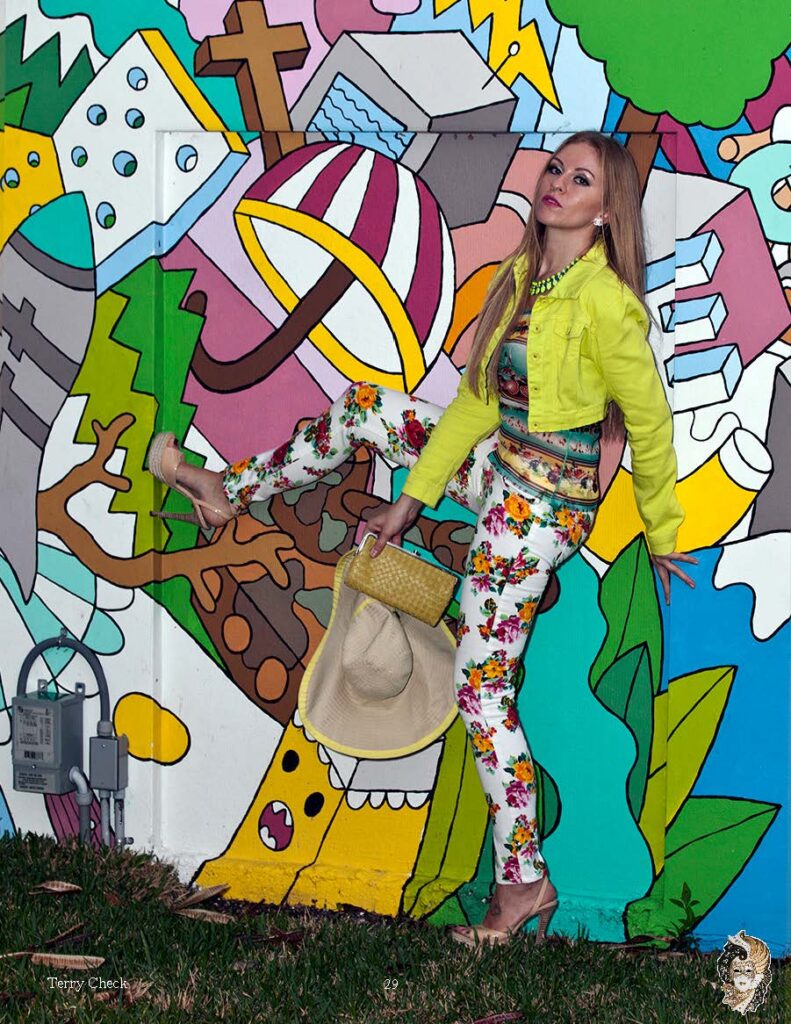
The impact of graffiti art on fashion design goes beyond just aesthetics. Graffiti culture embodies a spirit of rebellion and self-expression, values that resonate deeply with today’s youth. By incorporating graffiti-inspired designs into their collections, fashion designers are tapping into this cultural zeitgeist, creating clothing that reflects the attitudes and aspirations of a new generation.
Challenges and Controversies
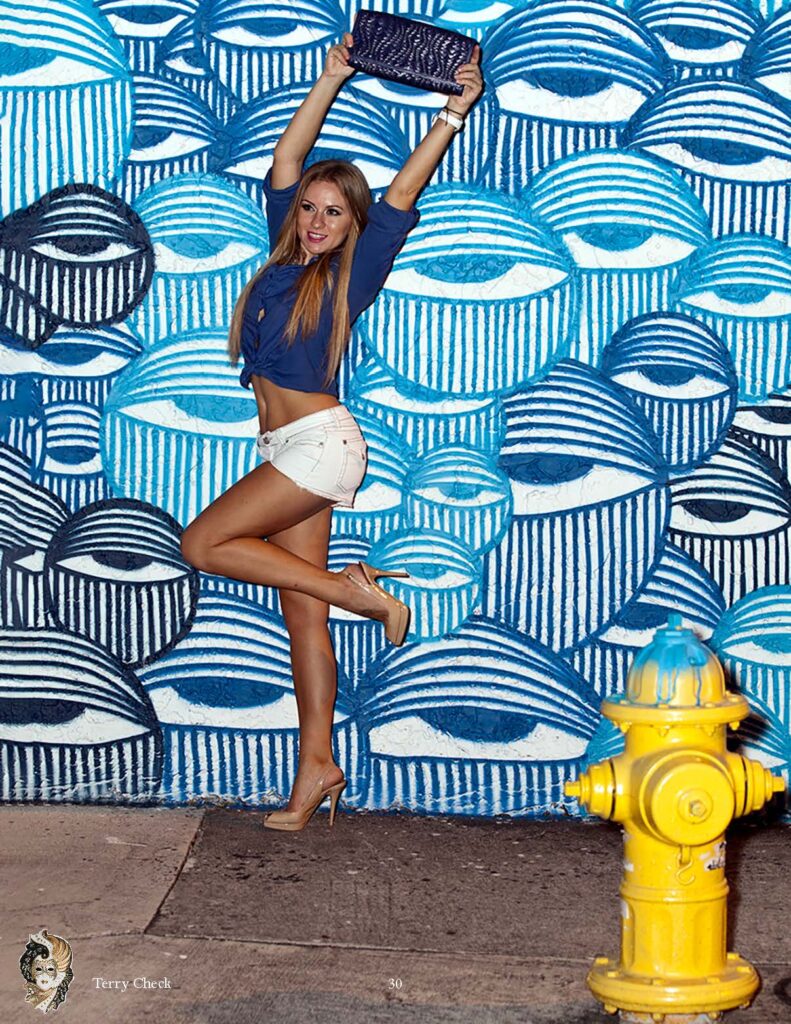
Despite its growing popularity, the fusion of graffiti art and fashion design is not without its challenges. Some critics argue that mainstream appropriation of graffiti dilutes its authenticity and undermines its roots in urban culture. Others raise concerns about the commercialization of street art, lamenting the loss of its subversive edge.
Looking to the Future
As graffiti art continues to evolve and adapts to new contexts, its influence on fashion design is likely to endure. Whether it’s through bold graphics, vibrant colors, or expressive messages, graffiti will continue to inspire designers to push the boundaries of creativity and innovation.
Fashion meets the street in a dynamic fusion of art and design. From its humble beginnings as a form of urban expression to its status as a driving force in the world of fashion, graffiti art has left a lasting mark on the cultural landscape. As designers continue to draw inspiration from the streets, the relationship between graffiti art and fashion design will only grow stronger, shaping the looks and trends of tomorrow.
Art Gone Wild
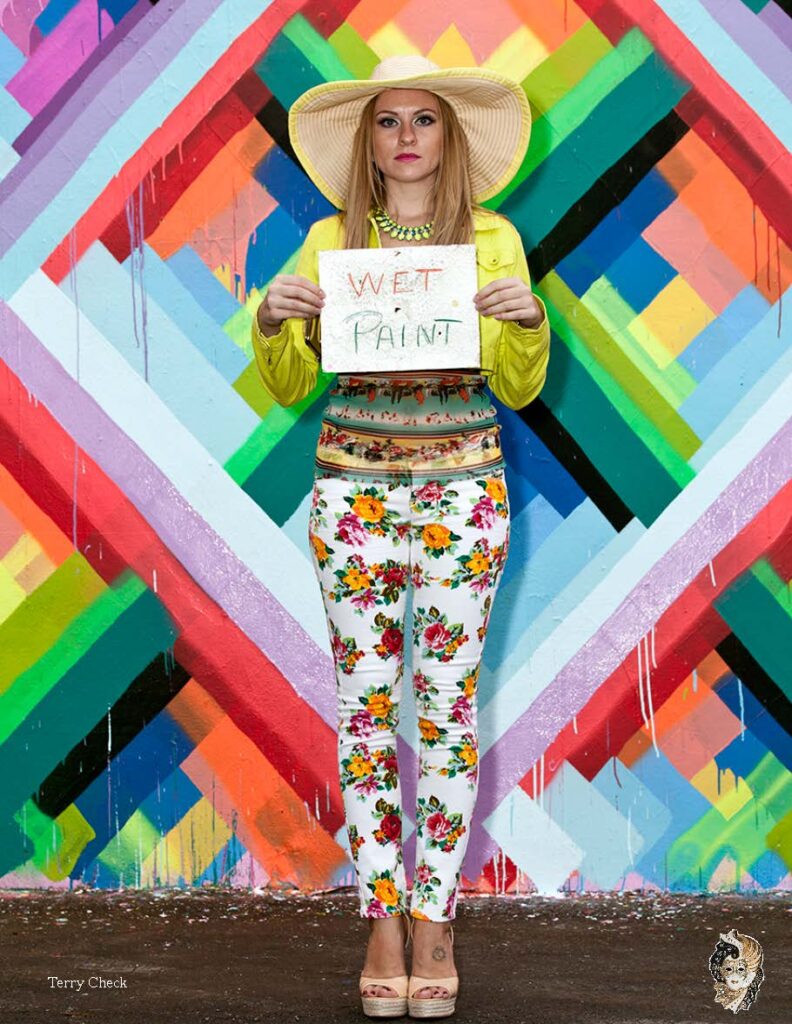
In Miami’s Wynwood Art District street artists and fashionistas come together to see and be seen.
It’s just another Friday afternoon in Miami and many folks are leaving work early for a little fun, no better place than the Wynwood Art District, just north of downtown Miami. City streets become pedestrian walkways, traffic comes to a halt and music from the patio bars fills the air. In recent years this former warehouse district has been transferred into an art lover mecca with more than 70 galleries, cafes, restaurants, eclectic shops and museums. Hundreds of building walls are covered with street art, formerly known as graffiti or vandalism with authorities arresting the artists. Notable street artists such as Kobra. Aiko, Retna, Shepard Fairey and many others come to Wynwood looking for a wall to paint, many spray paint anything that is not moving.
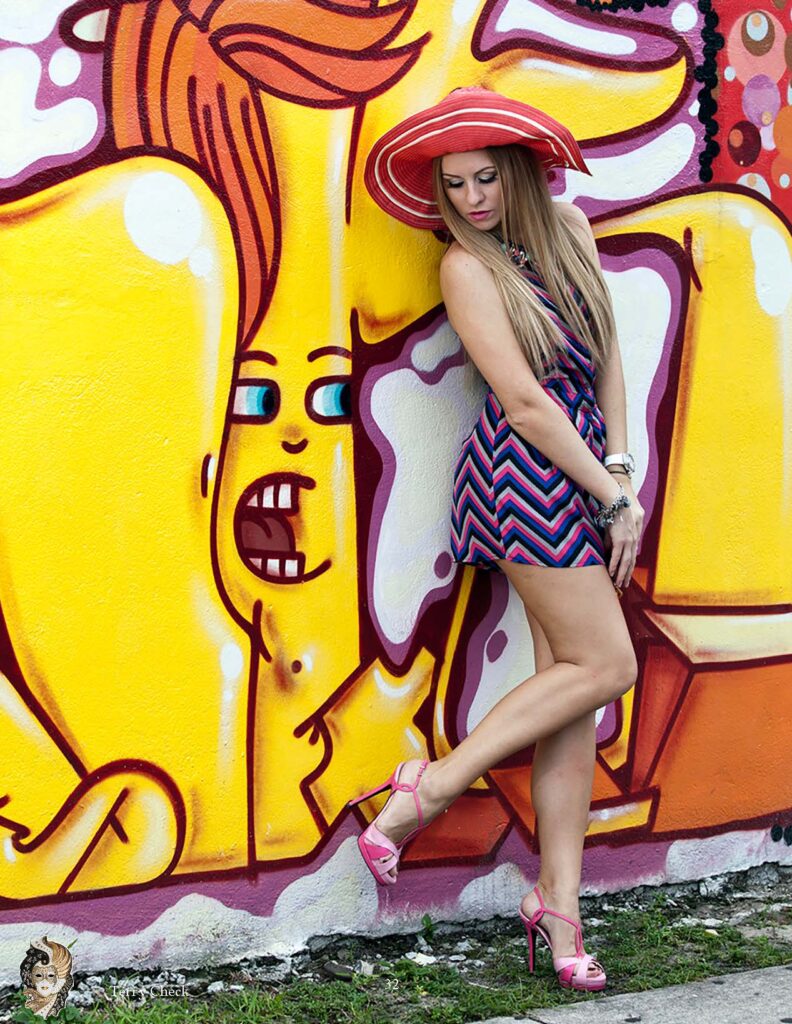
Thanks to the late Tony Goldman, a community revitalizer and an avid art lover, who said in 2009, “Wynwood’s large stock of warehouse buildings, all with no windows, would be my giant canvases to bring to them the greatest street art ever seen in one place”. His dream came to life with the Wynwood Walls, a major display of street art that he “believes is under appreciated and not respected historically”. In 2010, Wynwood Doors opened with 176 feet of roll-up storefront gates resembling an exhibition gallery featuring work of street artists from around the world. Street art has gradually become more respected as many cities protect their street art from vandalism (that is a switch), and auction houses sell street art for millions of dollars, like Basquiat’s “Untitled” for over $16,000,000.
Locals by the hundreds gather to watch the artists create. Others gather to watch and meet people, many dressed in blue jeans, and some “dressed to kill” using sidewalks as fashion runways. Cover model, Iryna Storozhuk, took to the streets for a fashion editorial enjoying the art along the way. She was noticed, stopping traffic as she walked along the streets and gathered a crowd as she posed for photos.
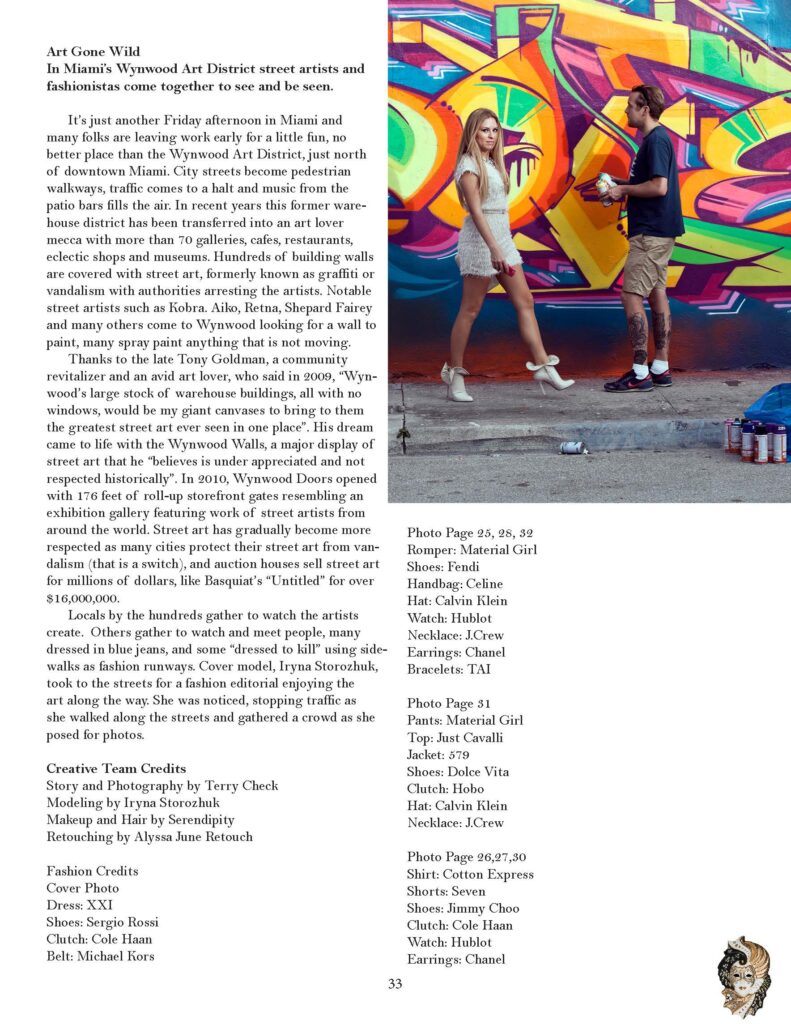
Creative Team Credits
Story and Photography by Terry Check
Modelling by Iryna Storozhuk
Makeup and Hair by Serendipity
Retouching by Alyssa June Retouch
Fashion Credits
Cover Photo
Dress: XX1
Shoes: Sergio Rossi
Clutch: Cole Haan
Belt: Michael Kors
Photo Page 25, 28, 32
Romper: Material Girl
Shoes: Fendi
Handbag: Celine
Hat: Calvin Klein
Watch: Hublot
Necklace: J.Crew
Earrings: Chanel
Bracelets: TAI
Photo Page 31
Pants: Material Girl
Top: Just Cavalli
Jacket: 579
Shoes: Dolce Vita
Clutch: Hobo
Hat: Calvin Klein
Necklace: J.Crew
Photo Page 26,27,30
Shirt: Cotton Express
Shorts: Seven
Shoes: Jimmy Choo
Clutch: Cole Haan
Watch: Hublot
Earrings: Chanel